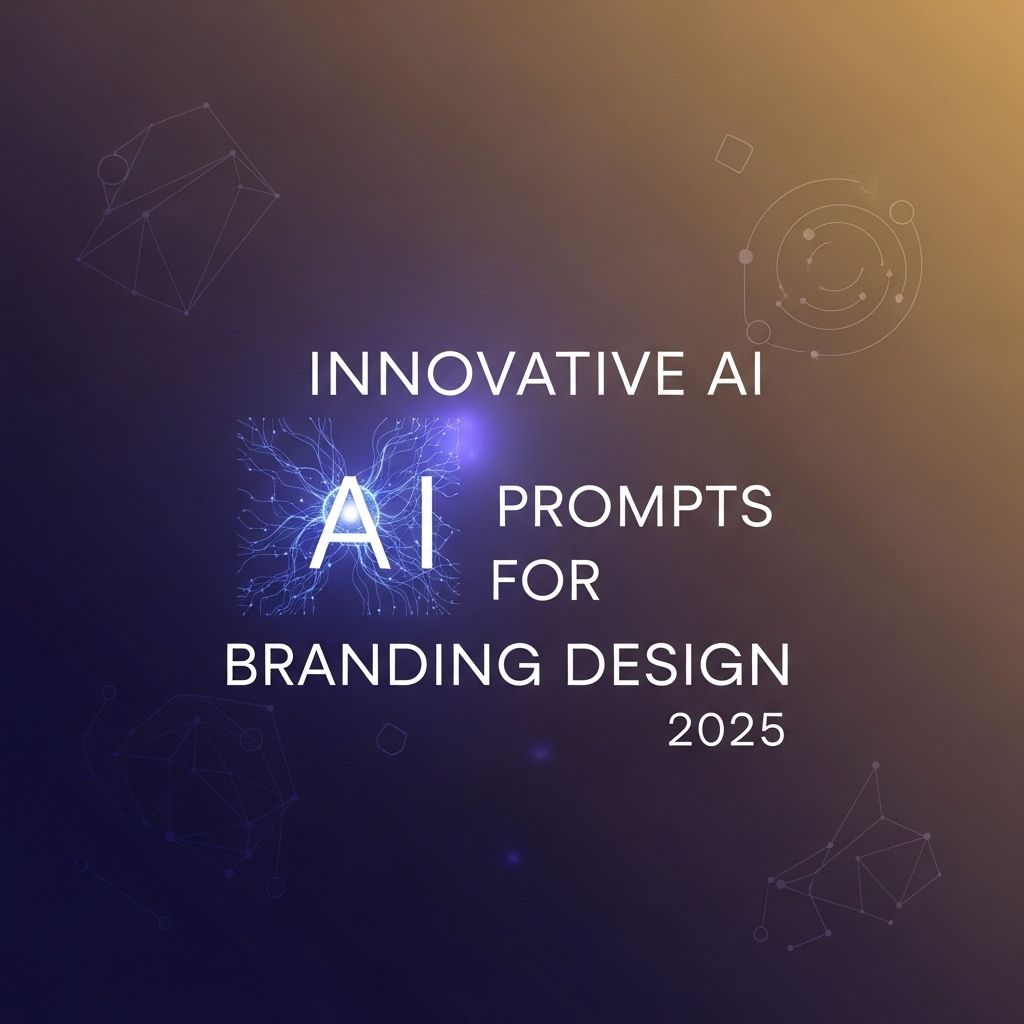In the rapidly evolving world of branding design, artificial intelligence (AI) is playing an increasingly pivotal role. Companies are leveraging AI to create distinctive brand identities that resonate with their target audiences. As we look ahead to 2025, the possibilities offered by AI prompts in branding design are truly innovative. This article explores some of the cutting-edge AI-driven techniques that can help brands stand out in a crowded marketplace.
Table of Contents
The Role of AI in Branding
AI is revolutionizing branding by automating tasks, generating creative ideas, and providing insights into consumer behavior. Here are some key areas where AI is making an impact:
- Data Analysis: Analyzing vast amounts of consumer data to identify trends and preferences.
- Design Generation: Automatically creating design elements based on specific input parameters.
- Personalization: Tailoring branding strategies to individual customers using AI algorithms.
- Market Prediction: Forecasting brand performance and consumer reaction to brand elements.
Innovative AI Prompt Techniques
As we delve into the realm of AI prompts for branding design in 2025, several innovative techniques are emerging:
1. Generative Design
Generative design is an AI-driven process that uses algorithms to generate a wide array of design options. Brands can specify certain parameters, and the AI will produce design variations that not only meet criteria but also push creative boundaries.
2. Natural Language Processing (NLP)
NLP can be utilized to generate brand voice guidelines and marketing copy that aligns with a brand’s identity. By analyzing successful branding campaigns, AI can help create prompts that evoke the desired emotions and associations.
3. Visual Recognition and Analysis
AI’s capabilities in visual recognition allow brands to understand how their logos and designs are perceived in the wild. By analyzing social media images, brands can refine their designs based on consumer reactions and preferences.
4. Emotion-Based AI Prompts
AI can assess emotions through image analysis, helping brands tailor their designs to evoke specific feelings. This can be particularly useful in creating packaging or advertising that resonates with consumers on an emotional level.
Implementing AI in Branding Strategy
Integrating AI into branding strategies involves several steps:
- Define Objectives: Understand what you want to achieve with AI—be it improving brand recognition, enhancing customer engagement, or increasing sales.
- Choose the Right AI Tools: Select tools that align with your branding goals. Popular AI tools include Adobe Sensei, Canva’s Magic Write, and Looka.
- Create a Collaborative Workflow: Encourage collaboration between design teams and AI tools to ensure that human creativity complements AI-generated outputs.
- Test and Iterate: Continuously test branding elements and iterate based on feedback and performance analytics.
Case Studies of Successful AI Branding Integration
Several brands have successfully integrated AI into their branding strategies:
| Brand | AI Application | Outcome |
|---|---|---|
| Burberry | AI for personalized shopping experience | Increased customer engagement and sales |
| PepsiCo | AI-generated marketing campaigns | Higher conversion rates |
| Heineken | Predictive analytics for market trends | Improved product launches and branding strategies |
Future Trends in AI and Branding Design
As we move towards 2025, several trends are anticipated in the intersection of AI and branding:
1. Hyper-Personalization
Brands will increasingly use AI to create hyper-personalized experiences, adapting branding elements to individual consumer preferences and behaviors.
2. Voice-Activated Branding
With the rise of voice assistants, brands will need to think about how their branding translates to voice, leading to the creation of audio logos and voice marketing strategies.
3. Sustainability Through AI
AI will help brands design sustainable products and packaging, optimizing supply chains and reducing waste in branding processes.
Conclusion
AI is set to reshape the landscape of branding design by 2025, offering innovative prompts and techniques that empower brands to create meaningful and impactful identities. By embracing AI, brands can not only stay ahead of the competition but also foster deeper connections with their audiences. As we look to the future, it is clear that integrating advanced AI technologies into branding strategies will be essential for success in an increasingly digital and interconnected world.
FAQ
What are innovative AI prompts for branding design in 2025?
Innovative AI prompts for branding design in 2025 involve using advanced algorithms to generate creative concepts, color palettes, typography suggestions, and logo designs that align with current trends and consumer preferences.
How can AI enhance branding design processes?
AI can enhance branding design processes by automating repetitive tasks, providing data-driven insights, offering personalized design suggestions, and facilitating collaboration among team members.
What trends in branding design should I consider for 2025?
Key trends for branding design in 2025 include sustainability, minimalism, interactive designs, and the integration of augmented reality to create immersive brand experiences.
Can AI help in creating a brand identity from scratch?
Yes, AI can assist in creating a brand identity from scratch by analyzing market data, understanding target demographics, and generating unique brand elements such as logos, taglines, and visual themes.
What role does user feedback play in AI-driven branding design?
User feedback plays a crucial role in AI-driven branding design as it helps refine AI algorithms, ensuring that the generated designs resonate with the target audience and meet their expectations.
How can small businesses leverage AI for branding in 2025?
Small businesses can leverage AI for branding in 2025 by utilizing affordable AI design tools, accessing market insights, and creating personalized marketing materials that enhance brand visibility and engagement.

